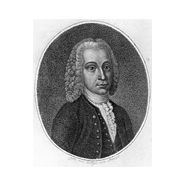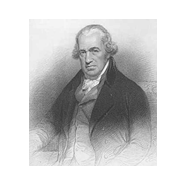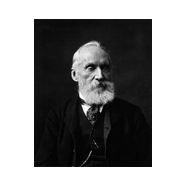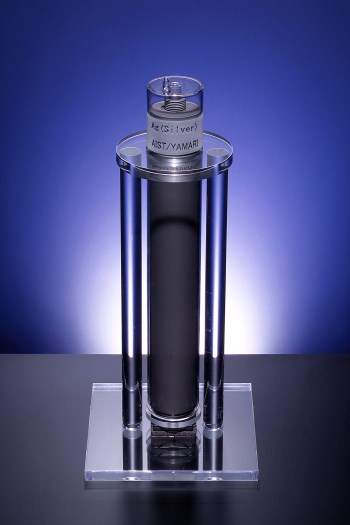Conveying Temperature
Unit of temperature
Temperature is a measure of the warmth and coolness of an object. It is a numerical representation of the state of thermal energy. There are several types of expressions (units) for the temperature, but we will introduce some typical ones.
- Celsius temperature [°C]
- The Celsius temperature [°C] was determined by Anders Celsius in 1742 and is the most familiar way of expressing it in everyday use.
To explain what the Celsius temperature is specifically, the freezing point of water is 100°C and the boiling point is 0°C.
We may think that the expression method is the opposite of the present method, but later we changed the method to the present one where the freezing point of water is 0°C and the boiling point is 100°C.

Anders Celsius (1701-1744)
Swedish astronomer.
He was a professor of astronomy at Uppsala University from 1730 to 1744.
- Fahrenheit Temperature [°F]
- The Fahrenheit Temperature [°F] was proposed by Gabriel Fahrenheit in 1724, and is currently the method of expression used in the United States.
To illustrate how the Fahrenheit temperature works, the freezing point of water is taken as 32°F and the boiling point as 212°F.
We may think that the reference value is halfway, but we believe that it is inconvenient if a negative value appears in the temperature that is used on a daily basis, and that this kind of numerical value has been set. (There are various theories)

Gabriel Fahrenheit (1686-1736)
German engineers, physicists.
We began experiments on mercury thermometers around 1713 and invented the mercury thermometer in 1724.
- Thermodynamic temperature [K]
- Thermodynamic temperature [K] is a 0K representation of the temperature at which the motion of energy ceases, derived by William Thomson in 1848 from the notion that temperature represents the total amount of energy in an object. It is also referred to as absolute temperature.
Since the thermodynamic temperature is on the same scale as the Celsius temperature, 0K is-273.15°C in Celsius temperature. Since this is a temperature created by the temperature nature of thermal motion, it is often used in physics, and the conversion formula is:
T[K] = t [°C] + 273.15

William Thomson, 1st baron kelvin (1824-1907)
British physicist.
K: Kelvin, a unit of thermodynamic temperature, was named after Sir Kelvin, who originated in the modal position.
Japanese temperature standard

Internationally defined temperatures in fiscal 1990, called ITS-90(International temperature Scale 1990), are currently in use.
For example, the triple point temperature of water is 0.01°C. The melting temperature and solidification temperature of various pure metals are determined from the reproducibility of the metal species, and the solidification temperature of each metal is determined by the National Research Institute in each country. The International Bureau of Weights and Measures (BIPM) is the center of this definition.
The National Institute of Advanced Industrial Science and Technology (AIST) serves as a representative of Japan’s standard temperature, and provides various temperature values to the International Conference. Through joint research with the National Institute of Advanced Industrial Science and Technology, we have developed fixed-point cells (aluminum spots, silver spots, etc.) and fixed-point realization devices, and have cooperated in realizing temperature standards on the high-temperature side. The solidification temperature achieved by the fixed-point cell and fixed-point realization equipment is the standard for temperatures in Japan, which helps us to determine international temperature values.
In other words, our fixed-point cell, realization equipment, provided Japan’s high-temperature-side temperature standard. The actual product of the fixed-point cell is displayed at the corner of the Japanese temperature standard at the Tokyo National Museum.
It can be said that the fixed-point cell of YAMARI INDUSTRIES, LIMITED is at the forefront of the traceability system in Japan.
Thermal tracing is connected to the standards of JCSS certified companies and calibration laboratories of various manufacturers, and traceability to practical thermometers such as thermocouples and resistive thermometers used for various high-precision measurements.
The fixed-point cell, which is the root of the temperature measurement, is responsible for the correctness of the temperature value measured by the temperature sensor traced.
Progress in Thermometry in JCSS and YAMARI INDUSTRIES, LIMITED
JCSS (Measurement Law Calibration Operator Registration System) is an abbreviation of Japan Calibration Service System and is registered by calibration sites that are capable of meeting national measurement standards and traceability set in accordance with global standards, are compliant with international standards (ISO/IEC17025), and have high-level technical and operational capabilities.
Standards Laboratory of YAMARI INDUSTRIES, LIMITED is an JCSS certified operator for international MRA, and JCSS0037 is a certification number for our Standards Laboratory.
| JCSS | Year and month | YAMARI INDUSTRIES, LIMITED |
|---|---|---|
| New Measurement Law was enacted to completely revise the former Measurement Law. | May, 1992 | |
| The new Measurement Law came into effect. JCSS started. | Nov, 1993 | |
| Aug, 1994 | Certified under the Japan Measurement Standards Supply System (JCSS: 0-200°C). | |
| Apr, 1997 | Certification for the Japan Measurement Standards Supply System (JCSS: Glass-made thermometer: 0-200°C) acquired. | |
| Joined APLAC MRA. | Dec, 1999 | |
| Joined ILAC MRA. | Nov, 2000 | |
| The Measurement Law was revised and implemented. Introduction of a hierarchical system for certified businesses. | Apr, 2001 | |
| Jul, 2001 | Expanded JCSS certification temperature range-40 to 420°C, glass-made thermometer-50 to 350°C. | |
| Oct, 2004 | JCSS Certified Temp. Range Extension-40 to 1100°C. | |
| The Measurement Law was revised and implemented. From certification system to registration and renewal system. | Jul, 2005 | |
| Apr, 2006 | Acquired JCSS certification for local thermometer calibration-30 to 1100°C (first in Japan). | |
| Sep, 2007 | JCSS Certified Temp. Range Extension-40 to 1554°C. | |
| Jan, 2009 | JCSS Certified Temp. Range Extension-196 to 1554°C. | |
| Apr, 2017 | Acquired JCSS certification for radiation thermometers 600 to 2000°C. |
